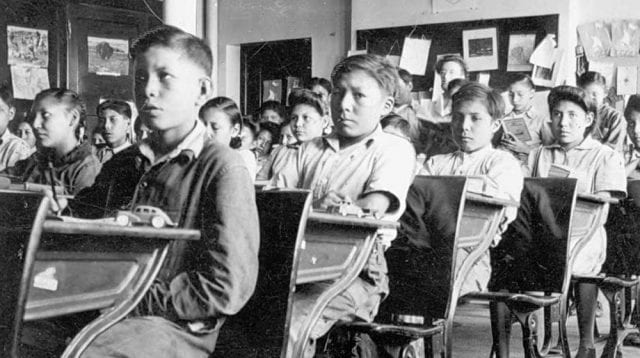
(The site where the Brandon Indian Residential school operated from 1895 to 1972. Photo: Brittany Hobson/APTN)
It’s unknown the official number of Indigenous children who died while attending residential schools in Canada but the National Centre for Truth and Reconciliation (NCTR) is hoping to change this.
The Centre estimates 4,200 children lost their lives but the organization is launching a new project that will help determine the actual number.
“We know that the number is going to go up,” said Ry Moran, director for the NCTR. “Obviously, that’s very sobering…what we’re doing in this is trying to fully account for, fully remember, fully honour those children that never returned home.”
The National Residential School Student Death Register is the answer to one of the Truth and Reconciliation Commission’s Calls to Actions released in 2015.
Moran calls the register the beginning of a conversation about the appropriate way to honour the children and families.
“What’s really important to recognize is this is part of a much broader series of calls to action around a very sensitive and very dark period in our country’s history,” he said.
Part of the research includes going through millions of documentations.
During TRC hearings the commission received approximately five million records including church and government archives, coroner’s reports and records from other archival collections.
Moran says the commission was never given a sufficient amount of time to go through the documents. The NCTR has had to do much of the work.
“There’s a significant amount of research to still be done,” said Moran. “There’s a lot of investigation that still needs to happen, a lot of dialogue with community that still needs to occur to properly honour and identify all the children that passed away while at the schools.”
Also included in this research is determining the locations of unmarked graves.
This is something the city of Brandon has been dealing with for the past four years.
The Brandon Indian Residential School operated from 1895 to 1972. The building was demolished in 2000.
The Sioux Valley Dakota Nation currently owns the property and an RV park is located down the hill from the old school grounds.
It is believed children are buried on the property by the river.
(The RV park where bodies of children who went to the Brandon Indian residental school attended are believe to be buried. Photo: Brittany Hobson/APTN)
Brandon mayor Rick Chrest says it’s been widely believed the area is an unmarked burial ground.
“There weren’t really any records that were specific indication. There were just general areas we believed bodies were buried,” he told APTN News last month.
Recently, Sioux Valley is appealing for the ability to search the grounds for remains. The park owner and the city are working with the community to determine the next best steps.
The NCTR is hoping to speak with communities like Sioux Valley to determine what the final project will look like. Moran said this could include something along the lines of a national monument, “we’re talking about a very solemn place of reflection and honouring for these children.”
Community meetings start in November and include locations across Canada.
Information can be found here: https://education.nctr.ca/memorial-register/













A lot of healthy children were ‘selected’ and then moved from the residential schools to TB hospitals and ‘convalescent homes’ attached to convents – so not all the grave sites will be located and/or documented using conventional means.
A lot of healthy children were ‘selected’ and then moved from the residential schools to TB hospitals and ‘convalescent homes’ attached to convents – so not all the grave sites will be located and/or documented using conventional means.
That is impossible to determine a true number considering many young girls were raped then often killed because they were pregnant. So that would/should count as two. Also many girls were listed as “run aways”
That is impossible to determine a true number considering many young girls were raped then often killed because they were pregnant. So that would/should count as two. Also many girls were listed as “run aways”